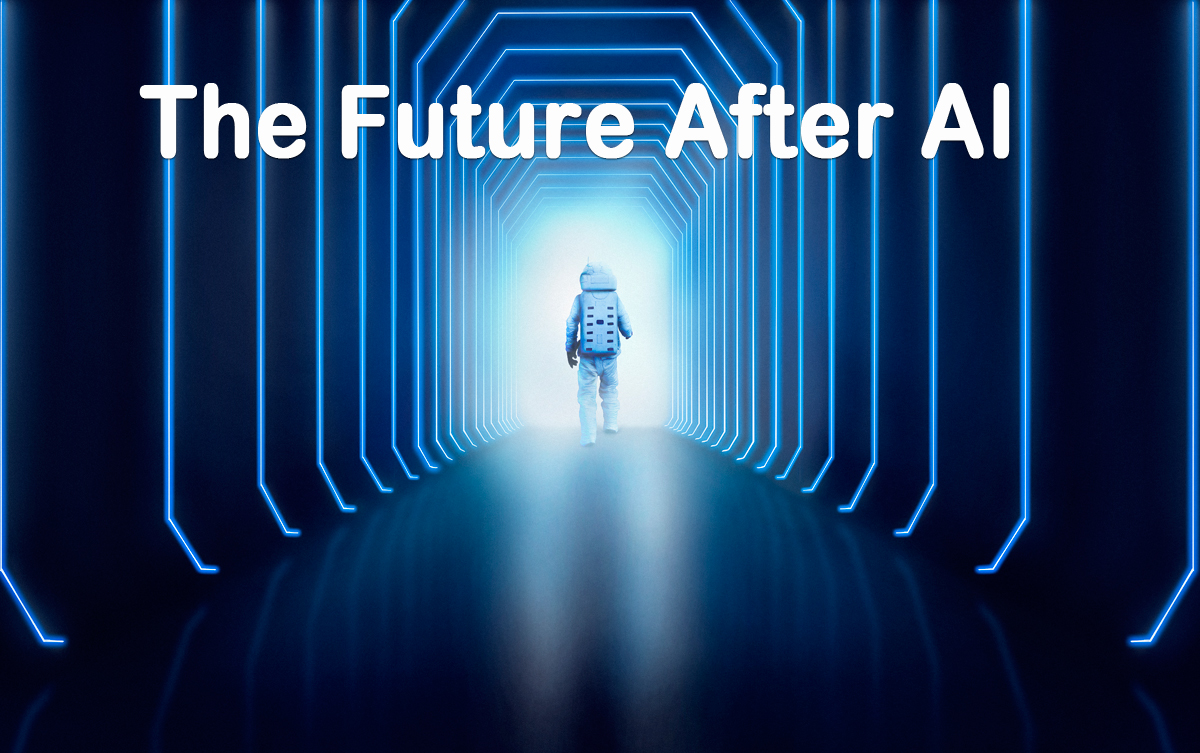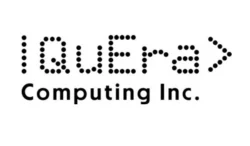Artificial intelligence (AI) has transformed the world, driving breakthroughs in healthcare, finance, transportation, and beyond, establishing itself as a cornerstone of the modern technological era. As AI continues to evolve, integrating into every facet of society, it raises a pivotal question: what will propel the next wave of the technological revolution? Rather than being supplanted, AI is likely to serve as a foundation for emerging paradigms that amplify its capabilities and address its limitations, ushering in an era of unprecedented innovation. From quantum leaps in computing power to direct interfaces between human minds and machines, the next revolution promises to redefine our relationship with technology and reshape the boundaries of human potential.
The successors to AI’s dominance are already taking shape, blending cutting-edge advancements with AI’s computational prowess to tackle challenges once thought insurmountable. Quantum computing, neuromorphic systems, brain-computer interfaces, decentralized autonomous networks, synthetic realities, and revolutionary energy solutions are among the frontrunners poised to drive this transformation. These technologies, each in varying stages of development, could converge to solve grand challenges like climate change, disease eradication, and resource scarcity, while raising profound ethical and societal questions. This article explores these emerging fields, their potential to build upon AI’s legacy, and the implications for a future where technology and humanity are more intertwined than ever.
Table of Contents
- 1. Quantum Computing: Unlocking Unprecedented Computational Power
- 2. Neuromorphic Computing: Mimicking the Human Brain
- 3. Biotechnology and Brain-Computer Interfaces: Merging Mind and Machine
- 4. Decentralized and Autonomous Systems: The Rise of Self-Organizing Technology
- 5. Synthetic Reality and Immersive Worlds: Redefining Human Experience
- 6. Energy and Material Innovations: Powering the Future
- The Road Ahead: Integration and Societal Impact
- Conclusion
1. Quantum Computing: Unlocking Unprecedented Computational Power
Quantum computing stands as one of the most transformative candidates to succeed or complement AI. Unlike classical computers that process bits as 0s or 1s, quantum computers use quantum bits (qubits), which can exist in superposition, allowing simultaneous processing of multiple states. This enables quantum systems to tackle problems intractable for classical computers, such as optimizing large-scale systems, simulating molecular interactions for drug discovery, or breaking current encryption standards.
Why It Matters
AI relies heavily on computational power for training models and processing vast datasets. Quantum algorithms, like Grover’s for search or Shor’s for factoring, could accelerate AI tasks exponentially. For example, quantum machine learning could optimize neural networks faster, enabling real-time adaptation in fields like autonomous vehicles or financial modeling. Additionally, quantum computing could revolutionize cryptography, necessitating quantum-resistant algorithms—a field already gaining traction.
Current State and Challenges
Companies like IBM, Google, and D-Wave are advancing quantum hardware, with Google’s 2019 claim of “quantum supremacy” marking a milestone. However, scalable, error-corrected quantum computers remain elusive, with estimates for practical, commercial systems ranging from 5 to 20 years. Challenges include maintaining qubit stability (coherence) and scaling quantum systems without prohibitive costs. As quantum computing matures, its integration with AI could usher in a new era of computational intelligence.
2. Neuromorphic Computing: Mimicking the Human Brain
Neuromorphic computing, inspired by the structure and function of the human brain, offers a paradigm shift in hardware design. Unlike traditional CPUs and GPUs, neuromorphic chips use architectures that emulate neural networks, enabling highly efficient, low-power processing for AI tasks. These systems excel in pattern recognition, sensory processing, and real-time decision-making, making them ideal for edge devices like IoT sensors, robotics, or wearables.
Why It Matters
AI’s energy demands are a growing concern, with large models like those powering generative AI requiring massive data centers. Neuromorphic chips, such as Intel’s Loihi or IBM’s TrueNorth, consume significantly less power by processing data in a brain-like manner—spiking neural networks that activate only when needed. This could democratize AI by enabling powerful, energy-efficient systems in resource-constrained environments, from rural healthcare to space exploration.
Current State and Challenges
Neuromorphic computing is in its early stages, with research focused on scaling and programming these chips for broader applications. The transition from traditional architectures to neuromorphic ones requires new software ecosystems and developer expertise. By 2030, neuromorphic systems could become a cornerstone of AI, enabling devices that learn and adapt like biological systems, potentially leading to more autonomous and intelligent machines.
3. Biotechnology and Brain-Computer Interfaces: Merging Mind and Machine
Brain-computer interfaces (BCIs) and biotechnology represent a frontier where technology directly interfaces with human biology. BCIs, like those being developed by Neuralink and Kernel, enable direct communication between the brain and external devices, potentially allowing thought-controlled interfaces, memory augmentation, or even treatment for neurological disorders. Biotechnology, including advancements like CRISPR and synthetic biology, could integrate with AI to engineer biological systems or create hybrid organic-digital entities.
Why It Matters
BCIs could redefine human-computer interaction, moving beyond keyboards and touchscreens to direct neural control. Imagine controlling a prosthetic limb, a virtual reality environment, or an AI assistant with your thoughts. In parallel, biotechnology could leverage AI to design custom organisms or therapies, revolutionizing medicine, agriculture, and environmental sustainability. Together, these fields could lead to a future where human cognition and machine intelligence are seamlessly integrated.
Current State and Challenges
BCIs face significant hurdles, including invasive implantation risks, ethical concerns, and decoding complex neural signals. Neuralink’s 2024 trials in humans showed promise but highlighted scalability issues. Biotechnology, while advancing rapidly, grapples with regulatory and ethical debates, particularly around gene editing. By 2040, BCIs and biotech could converge with AI to create augmented humans or entirely new forms of intelligence, though societal acceptance will be critical.
4. Decentralized and Autonomous Systems: The Rise of Self-Organizing Technology
The next revolution may involve decentralizing technology through distributed systems like blockchain, edge computing, or swarm intelligence. AI could evolve into networks of autonomous agents that collaborate without centralized control, managing complex systems like supply chains, energy grids, or urban infrastructure. Concepts like Decentralized Autonomous Organizations (DAOs) illustrate this shift, where AI-driven smart contracts govern operations transparently.
Why It Matters
Centralized systems are vulnerable to single points of failure, whether from cyberattacks or natural disasters. Decentralized AI systems could enhance resilience and scalability, enabling applications like autonomous drone swarms for disaster response or peer-to-peer energy trading. This paradigm aligns with growing demands for privacy, transparency, and local empowerment, reducing reliance on tech giants.
Current State and Challenges
Blockchain and edge computing are maturing, but scaling decentralized AI systems requires overcoming latency, security, and coordination challenges. Swarm intelligence, inspired by biological systems like ant colonies, is still largely theoretical for large-scale applications. By 2035, decentralized systems could dominate sectors requiring high reliability and autonomy, reshaping governance and economic models.
5. Synthetic Reality and Immersive Worlds: Redefining Human Experience
Extended reality (XR)—encompassing virtual reality (VR), augmented reality (AR), and mixed reality (MR)—combined with AI, could create immersive digital worlds that blur the line between physical and virtual realities. The “metaverse,” though currently a buzzword, hints at a future where AI generates dynamic, personalized environments for work, education, or social interaction.
Why It Matters
AI-driven XR could transform industries by enabling remote collaboration, immersive training, or therapeutic environments. For example, AI could generate real-time, photorealistic simulations for surgeons or architects, or create adaptive virtual classrooms tailored to individual learning styles. This could democratize access to experiences and opportunities, bridging geographic and economic divides.
Current State and Challenges
XR technologies are advancing, with devices like Apple’s Vision Pro and Meta’s Quest improving accessibility. However, challenges include high costs, motion sickness, and the computational demands of real-time rendering. AI’s role in generating content and reducing latency will be critical. By 2030, synthetic realities could become mainstream, fundamentally altering how we live, work, and play.
6. Energy and Material Innovations: Powering the Future
AI’s growth is constrained by energy and material limitations. The next revolution could center on breakthroughs in sustainable energy (e.g., fusion power, advanced solar) or novel materials like graphene, metamaterials, or room-temperature superconductors. These could enable AI to scale further by powering efficient data centers or enabling new computing paradigms, such as photonic computing, which uses light for faster, cooler processing.
Why It Matters
Energy-efficient technologies are critical for scaling AI sustainably. Fusion power, if achieved, could provide near-infinite clean energy, allowing AI systems to operate at unprecedented scales. Novel materials like graphene could create ultra-fast, lightweight electronics, while photonics could replace electron-based computing, reducing heat and energy use. These advancements would amplify AI’s capabilities and enable new applications, from space exploration to climate solutions.
Current State and Challenges
Fusion power remains a distant goal, with projects like ITER targeting 2035 for operational milestones. Materials like graphene are in early commercialization, facing manufacturing and cost barriers. Photonic computing is emerging but requires significant investment. These fields could mature by 2040, providing the infrastructure for AI’s next leap.
The Road Ahead: Integration and Societal Impact
The next technological revolution will likely involve a convergence of these fields, with AI as the connective tissue. For instance, quantum-powered AI could optimize neuromorphic systems, which in turn control decentralized BCI networks within synthetic realities, all powered by advanced energy solutions. This integrated future could solve grand challenges like climate change, disease, and resource scarcity but also raises profound ethical questions about privacy, autonomy, and inequality.
Societal Implications
- Ethics and Governance: BCIs and biotech raise concerns about consent and human enhancement. Decentralized systems could disrupt traditional governance, requiring new regulatory frameworks.
- Accessibility: Ensuring equitable access to these technologies will be critical to avoid widening global disparities.
- Security: Quantum computing’s potential to break encryption demands robust cybersecurity innovations.
- Sustainability: Energy and material advancements must prioritize environmental impact to align with global climate goals.
Timeline and Expectations
While AI is already transforming society, its successors are in varying stages of development. Quantum and neuromorphic computing may see practical applications by 2030–2035, while BCIs, decentralized systems, and synthetic realities could mature by 2040. Energy and material breakthroughs depend on unpredictable scientific leaps but could have cascading effects once achieved. The pace will depend on investment, collaboration, and societal acceptance.
Conclusion
The next technological revolution will not replace AI but build upon it, integrating quantum computing, neuromorphic systems, BCIs, decentralized networks, synthetic realities, and advanced energy solutions. These advancements promise to redefine computation, human capability, and societal structures, addressing challenges from climate change to healthcare. However, their success hinges on overcoming technical, ethical, and economic hurdles. As we stand on the cusp of this new era, the choices we make today—about investment, regulation, and equity—will shape the future of technology and humanity.







